- ConsultancyProcurement TransformationSourcing and Managed ServicesCost OptimisationSupply Chain ManagementSustainable Procurement
- Frameworks & DPS
- Commercial Procurement
- Technology
- Resources
- Why Inprova
- Contact Us
Get more information
Public sector procurement is entering a new era. A huge shake-up in legislation, rapidly evolving technologies and an ever-changing economic and political landscape are all forcing buying teams to rethink their strategies and operations.
This year and beyond, councils, universities, hospitals, and other public bodies must not only deliver value for money but also drive wider societal and financial outcomes for their communities.
From adopting automation to sharpening strategic skills and enhancing contract and risk management, five major trends are set to define the future of public sector procurement. Understanding and responding to these shifts will be crucial for public bodies aiming to stay resilient and impactful in an increasingly complex world.
AI is already transforming the way many sectors function, and procurement is no exception. Buying teams in the NHS, local government, transport and education are all looking to understand how they can harness automation and analytics, along with the relevant safeguards.
Specification writing : An obvious place to start is using generative AI to write specifications, cutting the cost of employing specialists. But that comes with a risk. For instance, will the automated spec be compliant with relevant laws? What guardrails should be set up around this?
Bid writing : Some suppliers are already using AI to write bids, a task that can be a significant administrative burden, particularly for SMEs. But with automated submissions, there’s a danger that quality drops and a supplier’s stated intentions become generic and meaningless.
Tender submissions should be thoughtful, bespoke responses to a contracting authority and its contract requirements and that’s why, over coming months, public sector procurement professionals will need to hone their ability to spot tell-tale signs of AI-written bids.
Procurement notices : Another area where AI could support is with the drafting of procurement notices. The Procurement Act has introduced a raft of extra requirements such as all public bodies with a spend above £100m a year having to issue pipeline notices for every contract with an estimated value of more than £2m.
For buyers at large public organisations with hundreds of contracts, that means a big increase in workload. But it’s also a perceptional problem as procurement teams try to add strategic value and move away from being seen purely as a transactional function.
AI could help to prepare pipeline notices, freeing up procurement professionals to focus on directly impacting business plans.
Recruitment is a major headache for public sector buying teams right now. Demand for procurement talent is higher than it’s been for years, and this is pushing up the salary expectations of even the least experienced candidates.
Public bodies must become employers of choice for procurement professionals. Think about how to position your organisation and your procurement function as offering a valuable, exciting and worthwhile career opportunity. How can you differentiate your public body from others?
With procurement carving out a reputation for supporting business strategy, the expertise required from public sector buyers will change, too. Yes, procurement is driven by process, but going forward, candidates will need to offer much more. Organisations will look for buyers who understand markets, price drivers and supplier needs, who can negotiate and ask probing questions around decision making.
Small, local businesses are crucial to job creation and economic growth, but historically, they’ve faced challenges in accessing public sector contracts. With the introduction of the Procurement Act 2023 and the new National Procurement Policy Statement (NPPS), the government is sending a clear message to contracting authorities: when you procure goods and services, give SMEs a fair chance.
A number of new rules support this sentiment. All public sector contracts have 30-day payment terms, ending the late payments that put small businesses at risk. The bidding process has been simplified via a single digital platform where all suppliers register to bid. SMEs also have improved visibility of business opportunities as public bodies have to publish new notices covering the entire procurement lifecycle.
These are important measures, but there is more that contracting authorities can do. One step is building SME engagement into everyday procurement decisions, as well as reviewing all processes and document templates to ensure they are accessible.
Whenever goods and services are procured, decisions should be made about the structures, suppliers and relationships required. Do you need local provision? Would one large contract be best, or smaller packages?
This is where good market engagement can help you understand the market and how different procurement approaches will impact cost and service standards. It will also allow you to ask small suppliers what puts them off bidding and what encourages them. Honest conversations are key.
Traditionally, the public sector has been pretty poor at managing contracts. Service managers tend to inherit a contract when they come into a role and supplier management is in addition to their many existing responsibilities. They don’t always have the skills or receive training, and although some get it right, many don’t. As a result, it’s common to see the value first identified in a tender exercise slowly erode over a contract’s lifecycle.
Another driver for top notch contract management is the new Procurement Act 2023 requirement that compels public bodies to regularly publish supplier performance metrics.
From now on, the public sector must carve out more consistent approaches to contract management, putting a strong emphasis on relationship building with the right suppliers. Understanding the key companies within your organisation’s supply chain and developing deep, fair, equal partnerships with them is essential, not only to comply with new legislation but to create long term value.
Who knows what the year ahead will bring in terms of geo-political developments. If recent events have been anything to go by, then economic, political and military shocks are set to continue in the near future.
This turbulence provokes uncertainty across global supply chains and it’s something public sector procurement professionals must be ready for. For example, many suppliers rely on products and materials coming from outside the UK. High inflation, wages and now tariffs are pushing up prices and suppliers feel they have no other option than to pass this on to their customers.
Public bodies and suppliers are also facing the pinch in other areas such as the rise in national insurance contributions and the National Living Wage (NLW). They will be wrestling with who covers these additional costs, and this is where procurement staff should prepare.
Understand your supply chain’s cost base, empathise with their pressures but challenge where appropriate. Price rises should never just be accepted. Request evidence and justification from suppliers but do your own research too. Arm yourself with intelligence to question your supply chain effectively—and use tools like public sector procurement frameworks to guide responses to market volatility.
Both the Procurement Act 2023 and the Government’s National Procurement Policy Statement put a firm focus on generating social and economic value benefits for the people and places that most need them.
Procurement teams must play an important role in realising this, but that isn’t just about putting relevant questions into invitations to tender.
One of the reasons why the social value ‘nut’ has been so hard to crack is that it often ends when the procurement process is over. In their bids, suppliers outline how they will support the local community, for example, but this isn’t always followed through. A lack of resource or understanding amongst contract managers means that targets are hard to monitor. Suppliers, too, might not have the capacity or capability to deliver on their promises.
Procurement teams need to grasp the nettle here. At the very least they should be part of the annual review process for a contract and that’s where they must grill suppliers about their social value commitments, measuring performance against KPIs.
It’s clear that public sector procurement is on the cusp of major change. Those organisations that move quickly – embracing (and controlling) new technologies, building strategic and supplier management skills, preparing for risks, and driving accountability around social value – will be best placed to deliver lasting results for their communities.
The years ahead will test public procurement teams, but they will also offer a real chance to do things better.
Ready to future-proof your procurement strategy?
Our expert consultancy team helps public sector organisations navigate change, harness innovation, and deliver real value. Explore our procurement consultancy services to see how we can support your goals.

